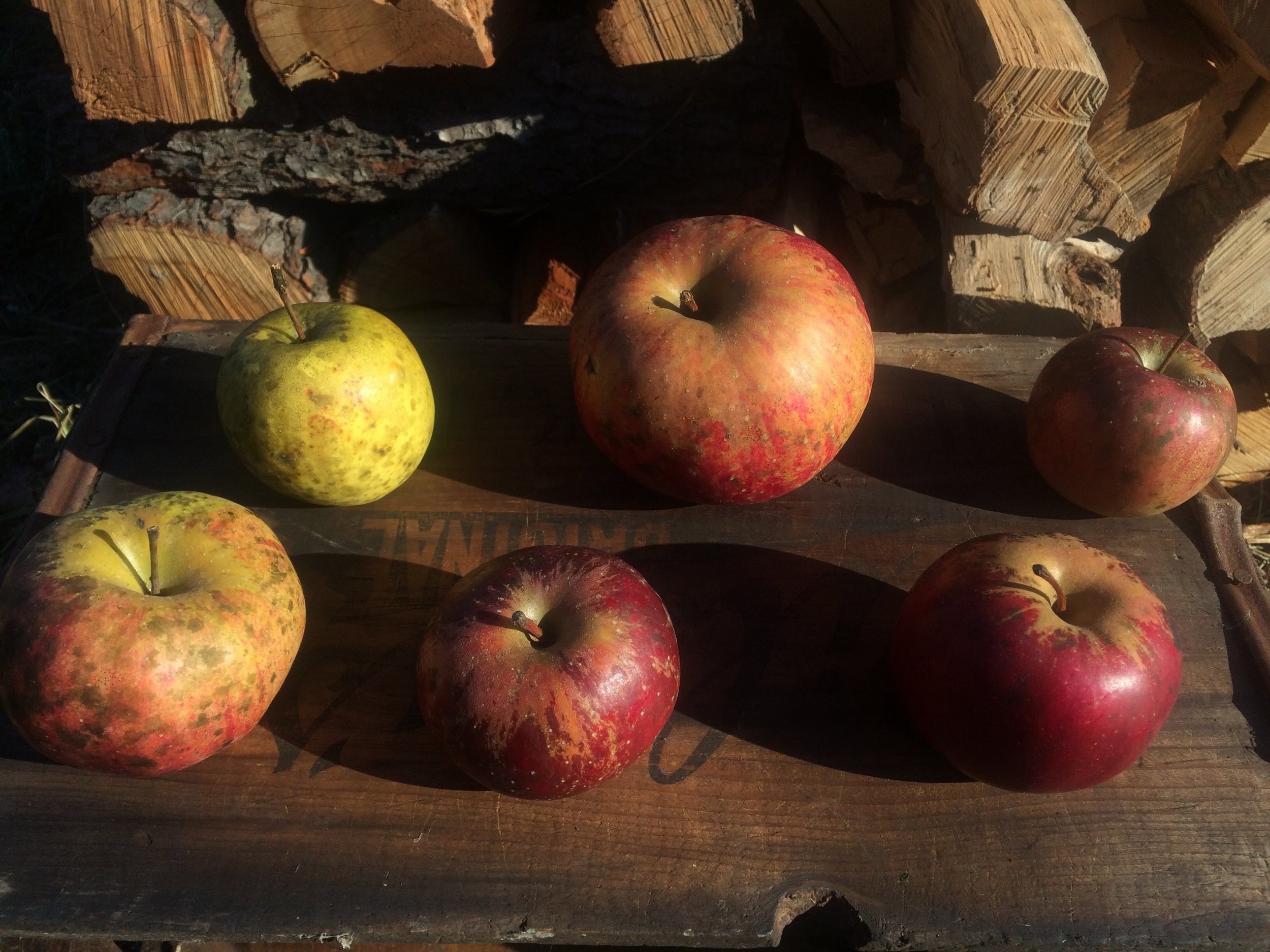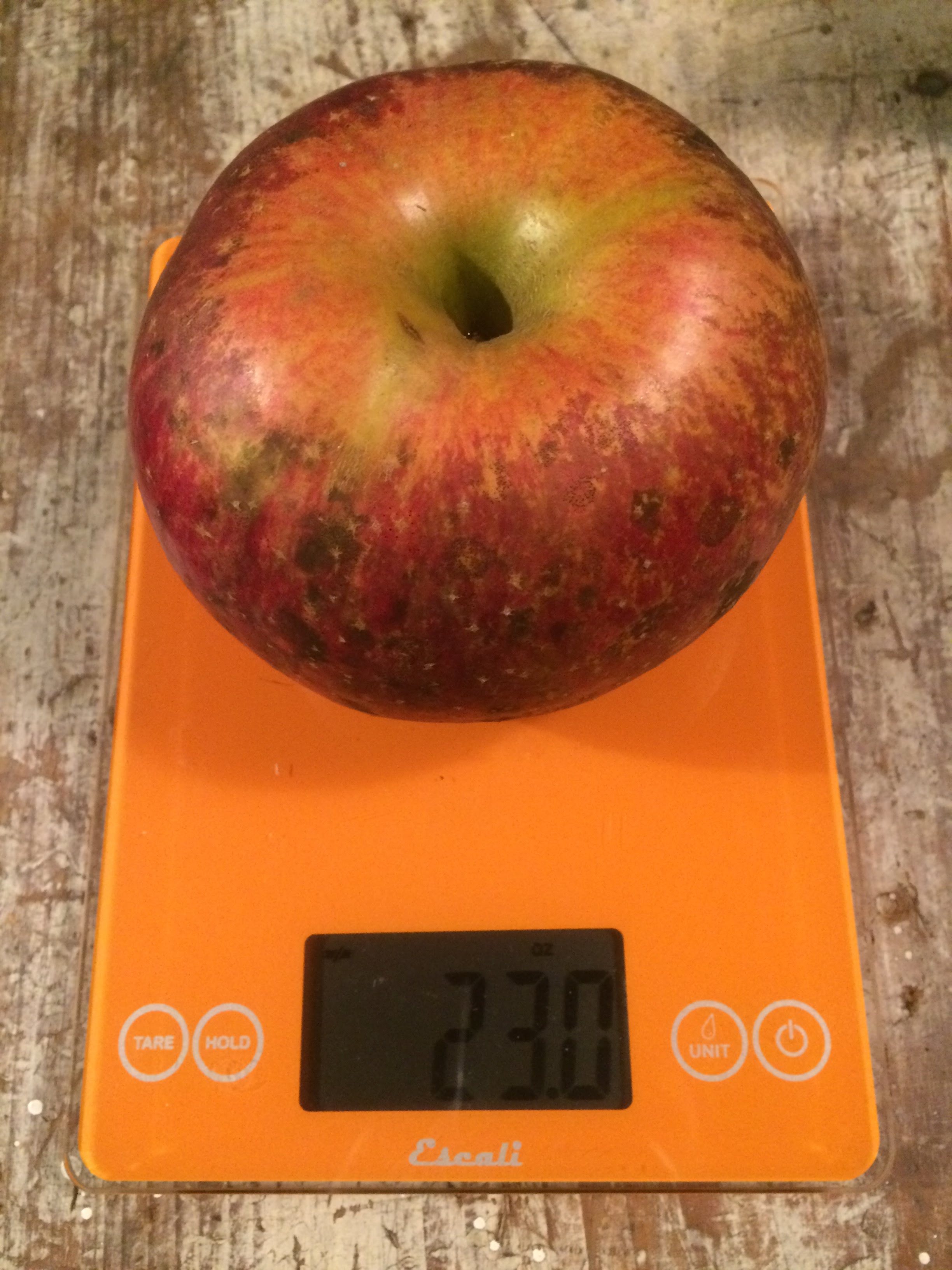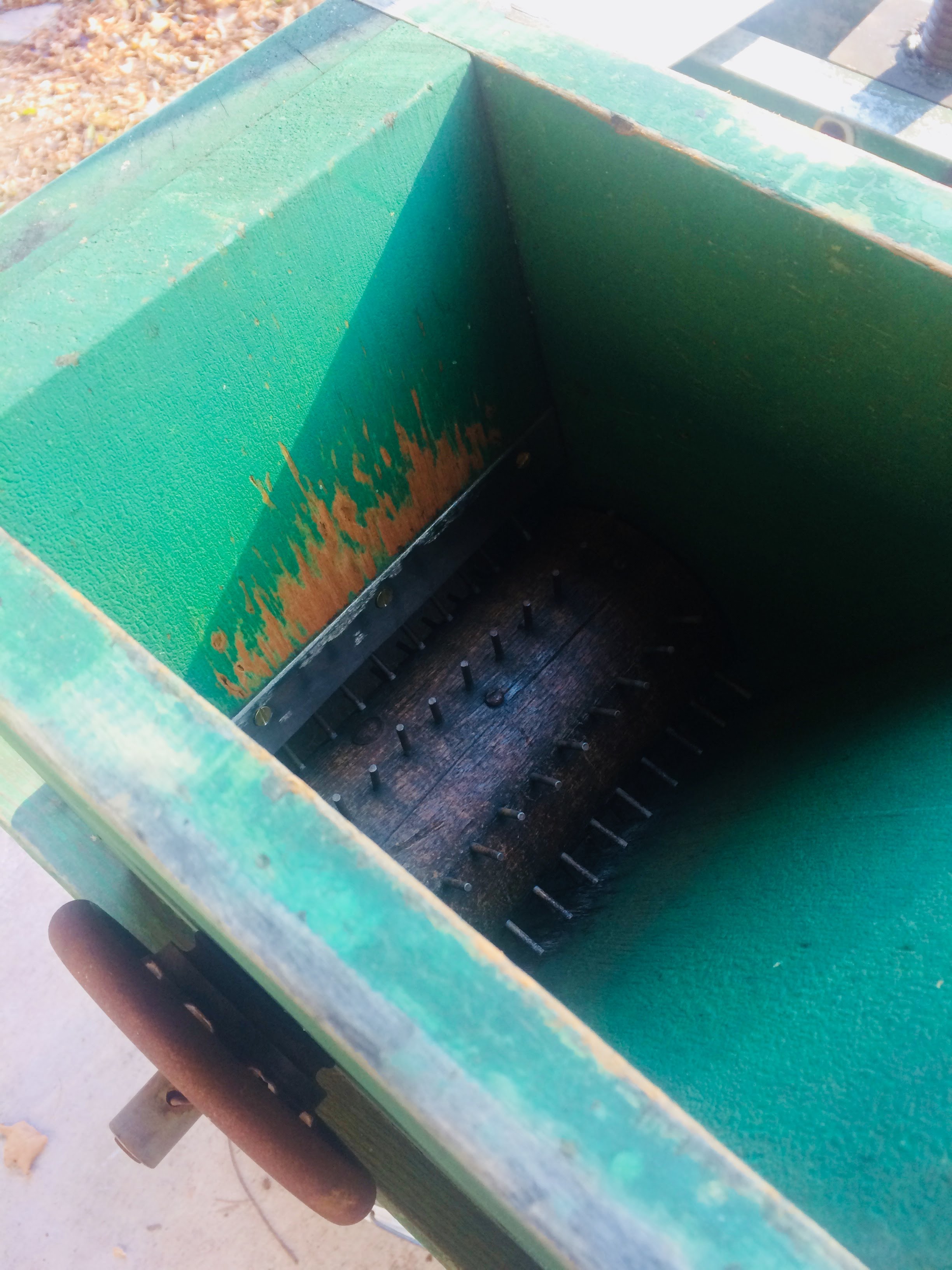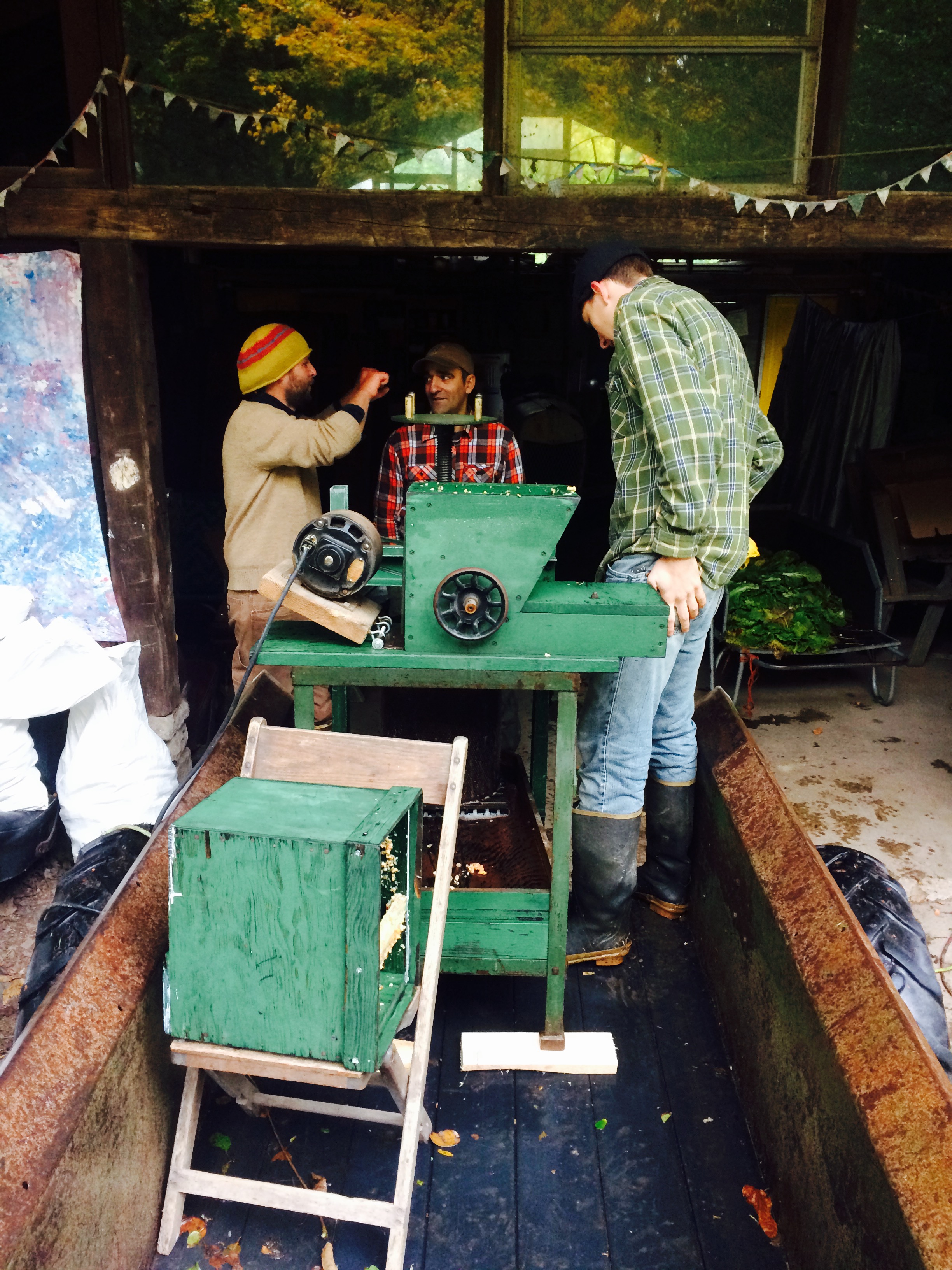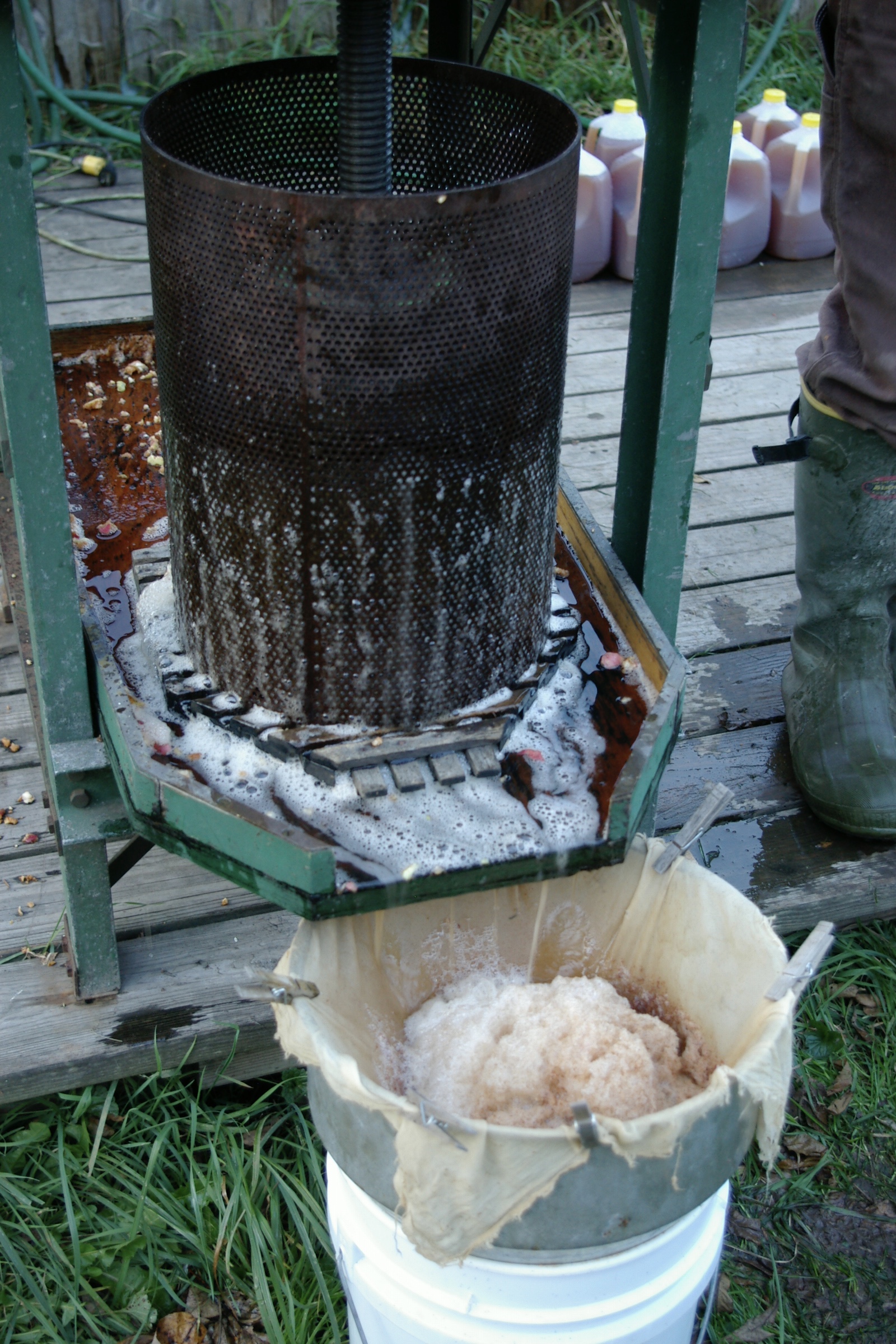How 'bout them apples?
/We have many, many apple trees here on the farm. Some are remnants of old orchards and have been here for 150+ years, others were planted in the early or mid twentieth century, and still others were planted in the 1990s and early 2000s. Some are named varieties well-known to the apple-obsessed, and some are unknown, lost, unnamed, or just plain wild seedlings planted by birds and mammals. Late October found us bringing in the last of this year's apples, and we've been reveling in pies, cider, applesauce and eating out-of-hand as we whittle down our supply of stored apples.
Different varieties have their strengths. Mutsu (also know as Crispin), and Fuji are two Japanese varieties that are 'dessert apples'. They are pretty much at their best when eaten raw. Baldwin and Northern Spy are both old classic varieties from the 1800s in the US. They are considered 'dual purpose' - both delicious fresh or cooked. Idared and Wolf River are cooking apples to the core - Idared makes a divine pinkish colored applesauce, and one big Wolf River can fill your pie shell halfway. But a pie is usually better with at least two varieties of apple - I usually try to use three or four varieties when I can. And on cider pressing day, any apples that need to be used go into the grinder - a good blend is sure to make a more delicious sweet cider!
Historically, there were roughly 7,000 named varieties of apples in North America since their introduction from Europe to the present day. Today we find about 30 common varieties on grocery shelves. If it doesn't keep well, ship easily, and still look good when it gets on the shelf, it has no place in the modern food system. Regardless of flavor of course. Though many of those old varieties have been lost to neglected orchards, development, and progress, there are still growers who produce some exquisite and interesting varieties. It's well worth your time to find one.


